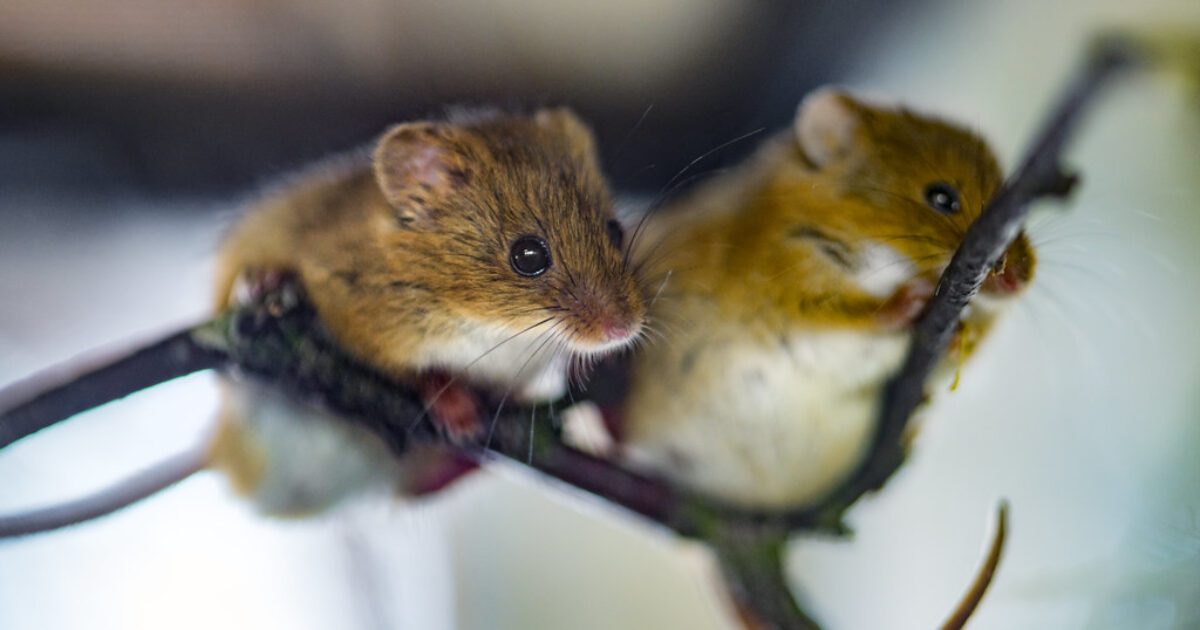Japanese scientists claim they’ve created mice with two biological fathers by generating eggs from male cells.
The disturbing Frankenstein-like experiment was conducted by researchers at Kyushu University.
Scientists say this “breakthrough” could help pave the way for same-sex couples to have biological children together in the future.
“This is the first case of making robust mammal oocytes from male cells,” said Katsuhiko Hayashi.
It’s a sickening case of scientists playing God with these wicked experiments.
Scientists create mice with two fathers after making eggs from male cells https://t.co/XJDIjiOk3a
— The Guardian (@guardian) March 8, 2023
🐁 Scientists say they have created mice with two fathers by producing eggs from male cells, in research that has the potential to open up radical developments for human reproduction https://t.co/Uk4bAJ3GGj
— The Telegraph (@Telegraph) March 9, 2023
The Guardian had further details:
Hayashi, who presented the development at the Third International Summit on Human Genome Editing at the Francis Crick Institute in London on Wednesday, predicts that it will be technically possible to create a viable human egg from a male skin cell within a decade. Others suggested this timeline was optimistic given that scientists are yet to create viable lab-grown human eggs from female cells.
Previously scientists have created mice that technically had two biological fathers through a chain of elaborate steps, including genetic engineering. However, this is the first time viable eggs have been cultivated from male cells and marks a significant advance. Hayashi’s team is now attempting to replicate this achievement with human cells, although there would be significant hurdles for the use of lab-grown eggs for clinical purposes, including establishing their safety.
“Purely in terms of technology, it will be possible [in humans] even in 10 years,” he said, adding that he personally would be in favour of the technology being used clinically to allow two men to have a baby if it were shown to be safe.
“I don’t know whether they’ll be available for reproduction,” he said. “That is not a question just for the scientific programme, but also for [society].”
The technique could also be applied to treat severe forms of infertility, including women with Turner’s syndrome, in whom one copy of the X chromosome is missing or partly missing, and Hayashi said this application was the primary motivation for the research.
Others suggested that it could prove challenging to translate the technique to human cells. Human cells require much longer periods of cultivation to produce a mature egg, which can increase the risk of cells acquiring unwanted genetic changes.
Previous experiments that attempted to birth mice with two fathers didn’t go well for the mad scientists who conducted them.
Via Live Science:
For the first time, researchers have directly created mice with two dads.
The mice weren’t able to survive for more than a day or so after birth, but coaxing an embryo made from the DNA of two dads all the way through fetal development was no small feat. It was much harder, the researchers found, than making mice with two moms.
The Guardian noted the specifics of this abhorrent experiment:
Male skin cells were reprogrammed into a stem cell-like state to create so-called induced pluripotent stem (iPS) cells. The Y-chromosome of these cells was then deleted and replaced by an X chromosome “borrowed” from another cell to produce iPS cells with two identical X chromosomes.
“The trick of this, the biggest trick, is the duplication of the X chromosome,” said Hayashi. “We really tried to establish a system to duplicate the X chromosome.”
Finally, the cells were cultivated in an ovary organoid, a culture system designed to replicate the conditions inside a mouse ovary. When the eggs were fertilised with normal sperm, the scientists obtained about 600 embryos, which were implanted into surrogate mice, resulting in the birth of seven mouse pups. The efficiency of about 1% was lower than the efficiency achieved with normal female-derived eggs, where about 5% of embryos went on to produce a live birth.
The baby mice appeared healthy, had a normal lifespan, and went on to have offspring as adults. “They look OK, they look to be growing normally, they become fathers,” said Hayashi.
He and colleagues are now attempting to replicate the creation of lab-grown eggs using human cells.
These mad scientists continue defying the natural world to hurtle humanity into a dystopian nightmare!



Join the conversation!
Please share your thoughts about this article below. We value your opinions, and would love to see you add to the discussion!